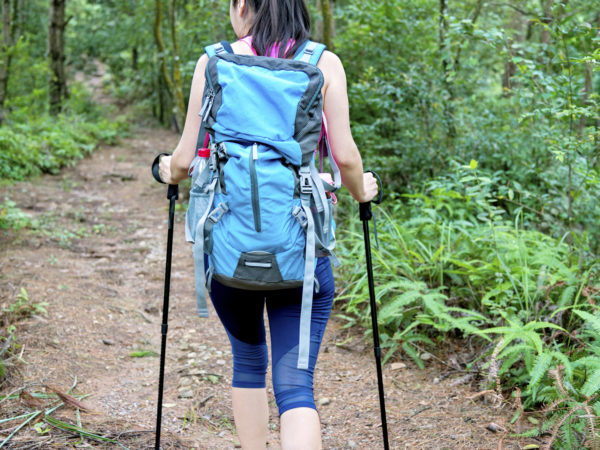Walking Better with Poles?
Can you give me any information on the benefits of fitness-pole walking? I’ve heard some good things about them and wondered if they were true.
Andrew Weil, M.D. | October 30, 2002

Updated on 4/4/2005
I’m glad to see that walking with fitness poles is catching on. I came across them in 2001 through a friend of mine, national fitness authority Tom Rutlin. As you know I am a great proponent of walking for fitness – especially sustained walking, which can give a better overall workout than running or using aerobic machines. Tom has made it his personal mission to make walking the most efficient workout possible. As a cross-country ski instructor, Tom saw the potential benefit of using ski poles with walking and has since pioneered their development and use. His “Exerstriders” have been shown to increase the calories burned while walking by 30-40 percent, as well as reducing the impact on your knees, hips and legs. Other research has shown that walking with poles increases oxygen consumption by 20-25 percent, when compared to walking without them. This results in better cardiovascular and muscular workout with less stress on weight-bearing joints.
Walking with poles is especially beneficial for those with early-to-advanced degenerative joint disease and those rehabilitating from knee surgery. It also improves balance when walking over uneven terrain, thus helping to prevent slips, sprains and other injuries.
Fitness poles aren’t the same as walking sticks, which are more common in Europe than in the U.S. (although they’ve become more popular here in recent years). Fitness poles take some getting used to – for maximum benefit you have to learn how to use them properly. Always start with two poles, one in each hand. Poles are not meant to be dragged on the ground or held in the hand like a walking stick. Start slowly and coordinate the pole plant with your stride. Plant them lightly with arm extended and push off forcefully with each stride to get an excellent workout. Remember, plant the pole opposite to the foot that hits the ground (e.g., plant the right pole as the left heel hits the ground). Be patient; it takes practice to make the movements smooth, and don’t worry about looks from passersby: the health benefits outweigh the small embarrassment of looking like you’re trying to cross country ski without the benefit of snow.
Andrew Weil, M.D.









